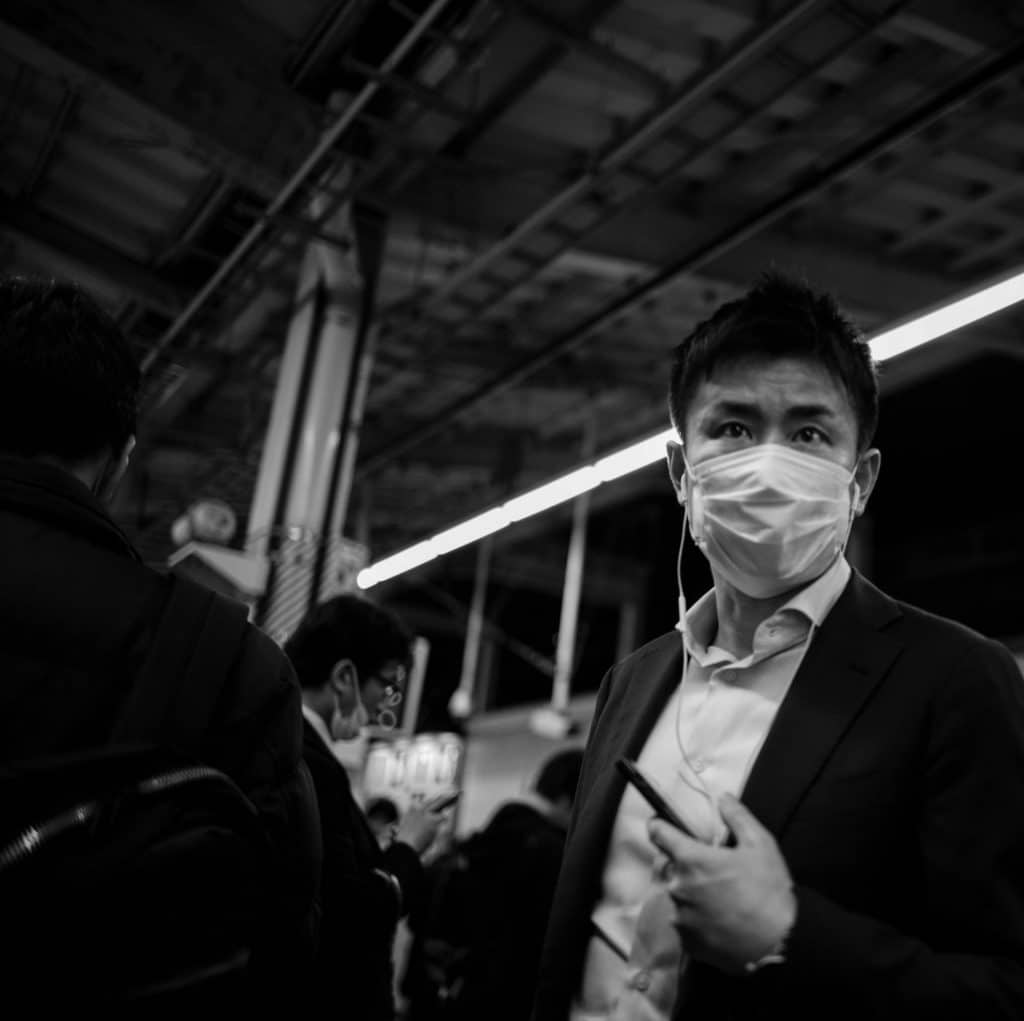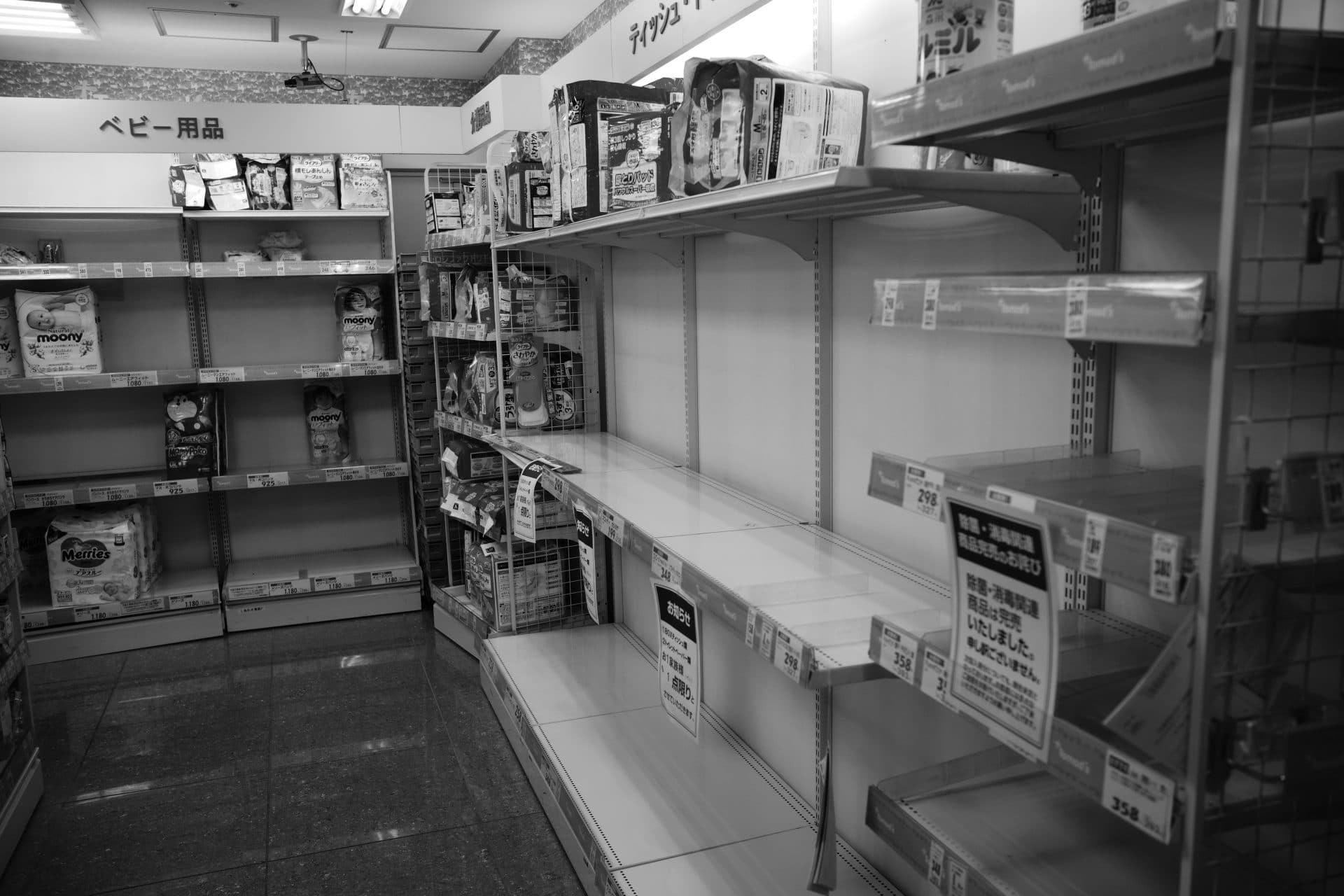By Azby Brown, Sean Bonner
 Since the Fukushima disaster in March 2011, Safecast—a volunteer-driven nonprofit organization that enables individuals to share radiation measurements and other data—has accumulated a lot of experience and insight about trust, crisis communication, public perception, and what happens when people feel threatened by a lack of reliable information. As our team at Safecast observes the global spread of the coronavirus and the poor responses to it, we can’t help but feel a strong sense of déjà vu.
Since the Fukushima disaster in March 2011, Safecast—a volunteer-driven nonprofit organization that enables individuals to share radiation measurements and other data—has accumulated a lot of experience and insight about trust, crisis communication, public perception, and what happens when people feel threatened by a lack of reliable information. As our team at Safecast observes the global spread of the coronavirus and the poor responses to it, we can’t help but feel a strong sense of déjà vu.
As with Fukushima, the preparation and communication vulnerabilities that the COVID-19 outbreak has laid bare were entirely predictable—and the physical, social, and economic effects that have erupted because of poor official communication should have been anticipated and prevented. We recently published some advice about COVID-19 for governments, the media, and individuals, but we wanted to explore the similarities between the two situations further.
Fear of the unknown is normal, and radiation and viruses are both invisible threats that heighten anxiety. Most people have almost no way to determine for themselves whether they have come into contact with either of these threats, and they find themselves dependent on specialists, testing devices, and government and media reports. If the government and media do not provide clear, credible explanations and prompt communications, misinformation and mistrust can easily take root and spread.
Lessons from Fukushima. In 2011, the way governments behaved during the initial days and weeks of the nuclear crisis determined whether or not the public could trust what they said later. As the Fukushima disaster unfolded, the Japanese government did not provide timely or credible information about the spread of radiation or their response to it. The media failed to hold representatives accountable, to vet their own sources, and to provide reliable information when it was most needed. The government and media lost the public trust within days and still have not regained it, nine years later.
This disastrous and damaging experience should have been a cautionary lesson to emergency responders and policy makers everywhere. Indeed, we and our colleagues at Safecast have participated in international crisis communication workshops since 2011 that have focused on these lessons. Distressingly, though, we’re seeing the same patterns emerge in response to COVID-19.
In Japan the first disturbing signs involved the lack of information about the passengers on the Diamond Princess cruise ship that was quarantined in Yokohama. Simultaneously, Japanese bus drivers and others who had spent days in close quarters with foreign tourists were diagnosed with the virus. Journalists were unable to get answers regarding efforts to track the patients’ contacts—who might have ridden the same trains, stayed at the same hotels, ate at the same restaurants, and shopped at the same shops as those diagnosed with the virus. The captain of the Diamond Princess was the last to leave the cruise ship after its two-week quarantine at the port of Yokohama, Japan. Credit: Princess Cruises/Vincenzo Guardascione
The captain of the Diamond Princess was the last to leave the cruise ship after its two-week quarantine at the port of Yokohama, Japan. Credit: Princess Cruises/Vincenzo Guardascione
 The captain of the Diamond Princess was the last to leave the cruise ship after its two-week quarantine at the port of Yokohama, Japan. Credit: Princess Cruises/Vincenzo Guardascione
The captain of the Diamond Princess was the last to leave the cruise ship after its two-week quarantine at the port of Yokohama, Japan. Credit: Princess Cruises/Vincenzo Guardascione
In the absence of credible information, it was reasonable for the public to assume tracking simply wasn’t being done, and that the stonewalling and misdirection were attempts to cover that up. The public understands that governments often regard journalists as adversaries during emergencies, rather than as valuable partners who can convey accurate and transparent information to the public. If reporters are unable to obtain and share credible information, they lose their ability to help persuade people to take appropriate measures. This happened in 2011, and the same dynamic is unfolding today.
Preparation and communication. The single most important parallel between the Fukushima disaster’s aftermath and the COVID-19 outbreak is that many governments around the world are clearly inadequately prepared to handle the outbreak and appear to be prioritizing their own political risks over public health. This is bad for everyone. As in 2011, the public hears vague, contradictory, and misleading official statements. Information the public needs to know has been routinely omitted—or worse, is published and then quietly removed, as happened with testing data on the US Centers for Disease Control and Prevention website. News channels present markedly different accounts of the crisis.
Good crisis communication is possible, and there are superb emergency-communication specialists in every country who have trained for these events for years. They know how to explain the situation concisely, and how to advise the public in a level-headed, straightforward manner that is optimized to ease anxiety and encourage cooperation with protective steps. Some of the communications regarding COVID-19—such as this update from two professors at Imperial College London, and this lecture at Carnegie Mellon University’s Tepper School of Business—have been exemplary, but these have been exceptions. Unfortunately, politicians have inserted themselves and their agendas into the narrative to the detriment of all, while ill-informed talking heads spout speculation and misinformation, just as we saw in 2011.
Fukushima taught us that an information vacuum will exacerbate the sense of helplessness and abandonment people feel, making them receptive to the wildest of rumors. Officials could have predicted this and taken steps to forestall it, but rumors about the coronavirus and its consequences that foster a sense of panic have again found fertile ground on social media. In Japan, where the expert consensus is that face masks are of little help, they have been sold out for weeks. Hand sanitizer, which is believed to be effective, is sold out as well. There has been a nonsensical run on toilet paper in Japan, Europe, North America, and Australia. Similarly unnecessary hoarding of toilet paper, rice, milk, and gasoline—which created artificial shortages—gripped an otherwise unaffected Tokyo in March 2011. Then as now, the lack of trustworthy information spawned fast-traveling conspiracy theories. Empty shelves at a neighborhood drug store in Shibuya. Photo by Sean Bonner
Empty shelves at a neighborhood drug store in Shibuya. Photo by Sean Bonner
 Empty shelves at a neighborhood drug store in Shibuya. Photo by Sean Bonner
Empty shelves at a neighborhood drug store in Shibuya. Photo by Sean Bonner
In Japan in 2011, the most disruptive measures implemented were evacuations. Before the meltdowns, Japanese officials and the nuclear industry had convinced themselves that a major accident was impossible, so adequate emergency planning was never done. Consequently, the Fukushima evacuations were hastily thrown together and poorly executed. This resulted in dozens of deaths of critically ill patients who should not have been moved, and widespread distress leading to early deaths for others in subsequent months. It was a painful experience, and its wider implications should have been recognized. Instead, the lack of preparation for dealing with shipboard virus outbreaks, in particular, suggests that the lessons of 2011 were not heeded, which has already led to increased infections and death.
Government coordination. Official and independent analyses following the Fukushima disaster highlighted how poor communication and coordination across various levels of government exacerbated the problems. The central government expected its directives to be received by a ready and waiting prefectural government, which would relay them to municipal governments. In reality, communication channels were disrupted, and crucial messages went unsent or unacknowledged despite the sincere best efforts of many on the ground.
In 2020 we are seeing similarly poor communication within government. In the United States, experts at the Centers for Disease Control and Prevention and elsewhere have found themselves obliged to contradict the White House regarding the seriousness of the disease and the likely extent of the outbreak, while the White House contradicted the World Health Organization regarding its estimated mortality rate. State governments, frustrated by the lack of resources and guidance from Washington, are making their own plans. Local governments are left hanging. This should have been anticipated and prevented.
What quarantine measures are in place or being considered? What travel bans? These decisions have huge ramifications. To avoid the kind of chaos and widespread psycho-social issues that developed in Fukushima, trustworthy government spokespeople should have started explaining weeks ago when and why these steps might be taken, and for how long they would remain in place. But as in 2011, clear information is rarely provided, and people cower indoors in fear of an invisible threat, unsure how long they will be required to remain sheltered and whether or not they will have enough food.
Blaming the victims. Another parallel with Fukushima is the stigmatization of the affected populace. In Asia the coronavirus outbreak has led to a rash of anti-Chinese sentiment, while overseas it has manifested as a disturbing rise in indiscriminate anti-Asian racism. After the 2011 nuclear disaster, Fukushima suffered from a serious stigma that has damaged the long-term market for goods produced there, and we can anticipate that areas of the globe experiencing large COVID-19 outbreaks will suffer similarly in the months and years to come.
In Japan, a few widely publicized physical confrontations in the street and on trains have been touched off by people coughing or cutting into a line to buy face masks. This is a direct result of a misinformed public and should be seen as a preview of what is to come elsewhere if misinformation continues to spread unchecked.
Currently, neither Japan nor the United States have tested their populations widely for the coronavirus. As testing programs ramp up, the number of detected cases will certainly rise, in some cases alarmingly. This is a recipe for panic unless governments immediately take significant steps toward transparency. If they don’t, we fear that 2020 will continue to look distressingly like 2011. The world shouldn’t have to keep repeating the same painful lessons.
No comments:
Post a Comment